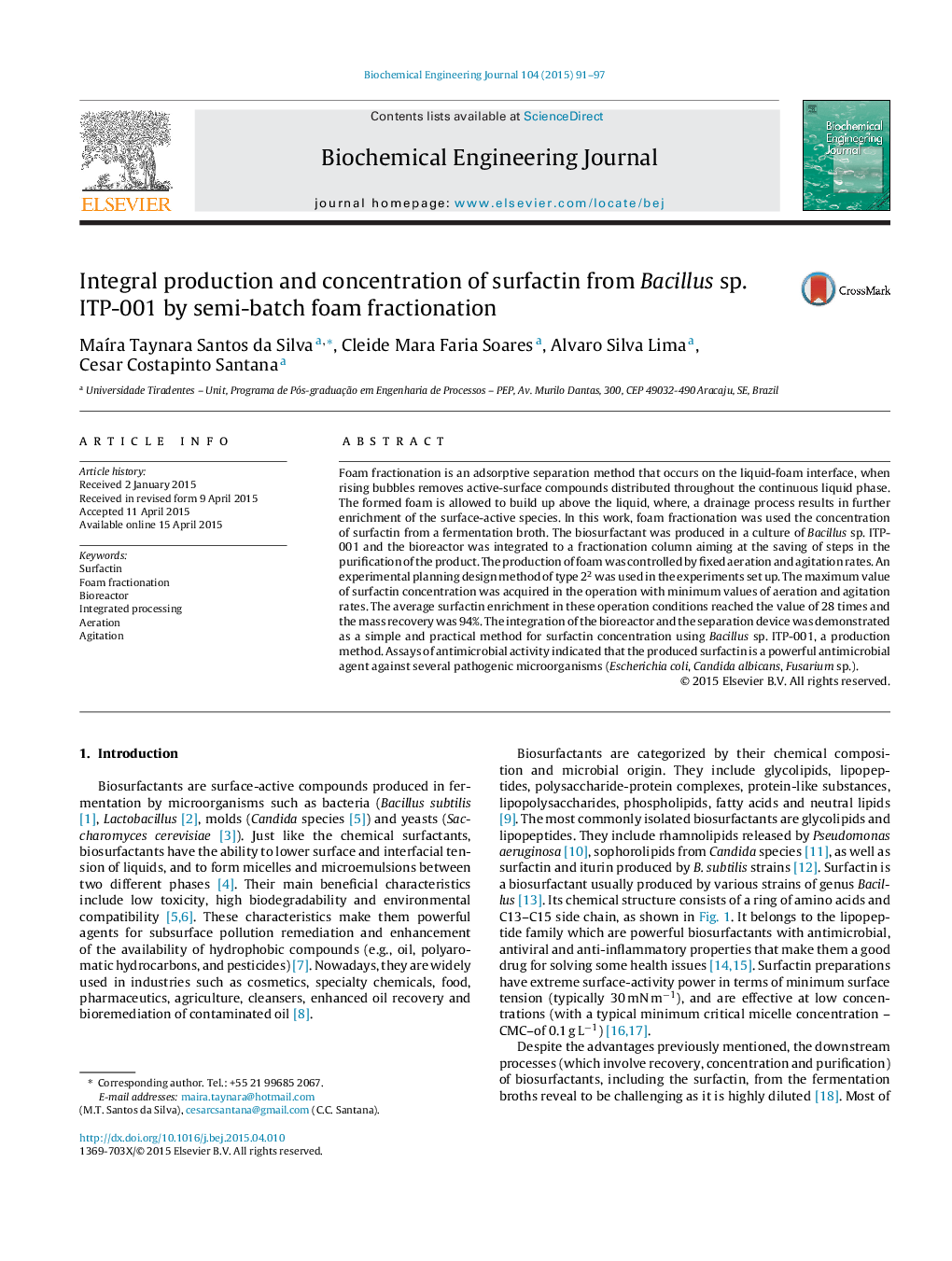| Article ID | Journal | Published Year | Pages | File Type |
|---|---|---|---|---|
| 2793 | Biochemical Engineering Journal | 2015 | 7 Pages |
•The used system is a simple method to production and concentration of surfactin.•The surfactin enrichment factor is highly dependent on the agitation and aeration.•The fermented broth has antimicrobial activity against pathogenic microorganisms.
Foam fractionation is an adsorptive separation method that occurs on the liquid-foam interface, when rising bubbles removes active-surface compounds distributed throughout the continuous liquid phase. The formed foam is allowed to build up above the liquid, where, a drainage process results in further enrichment of the surface-active species. In this work, foam fractionation was used the concentration of surfactin from a fermentation broth. The biosurfactant was produced in a culture of Bacillus sp. ITP-001 and the bioreactor was integrated to a fractionation column aiming at the saving of steps in the purification of the product. The production of foam was controlled by fixed aeration and agitation rates. An experimental planning design method of type 22 was used in the experiments set up. The maximum value of surfactin concentration was acquired in the operation with minimum values of aeration and agitation rates. The average surfactin enrichment in these operation conditions reached the value of 28 times and the mass recovery was 94%. The integration of the bioreactor and the separation device was demonstrated as a simple and practical method for surfactin concentration using Bacillus sp. ITP-001, a production method. Assays of antimicrobial activity indicated that the produced surfactin is a powerful antimicrobial agent against several pathogenic microorganisms (Escherichia coli, Candida albicans, Fusarium sp.).
